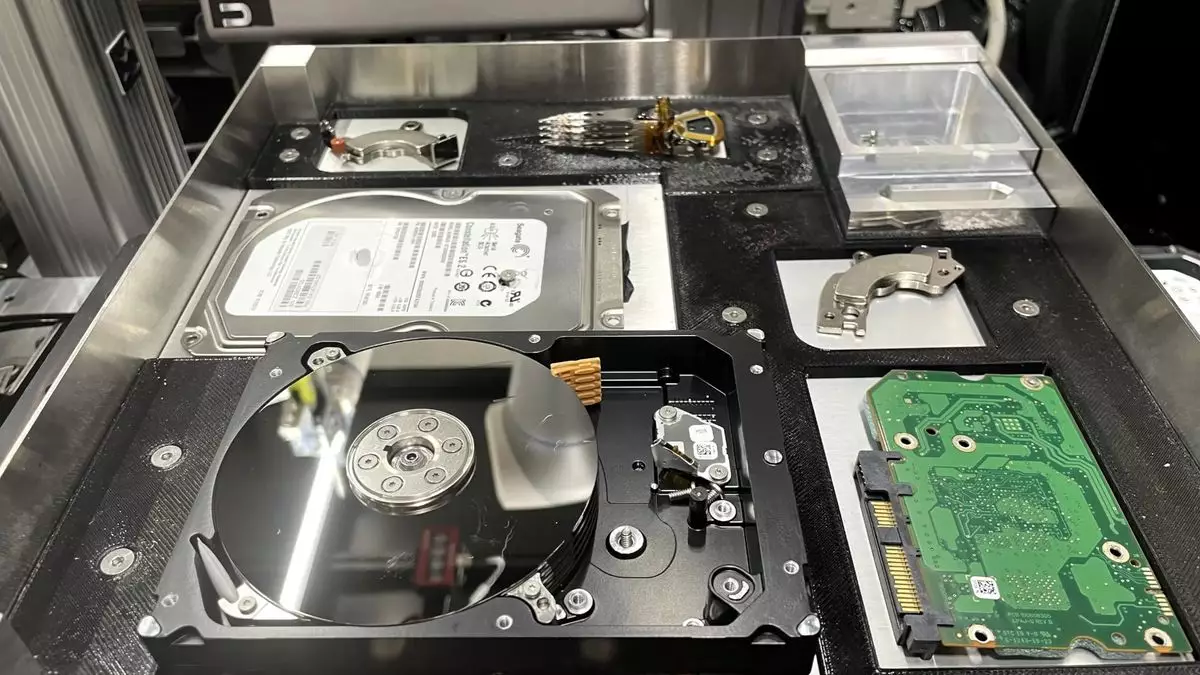In today’s technological landscape, e-waste has emerged as a significant environmental challenge, with an estimated 50 million metric tons generated each year globally. Among the vast array of discarded tech, defunct hard drives constitute a substantial portion of this waste. The traditional method of dealing with these retired drives typically involves shredding, a process dictated by the need to protect sensitive data. However, this approach leads to a staggering amount of material being wasted, as very little is actively recycled or repurposed. This is where innovation and technology step in, particularly through the use of robotics.
Recognizing the extent of the issue, Microsoft has taken it upon itself to explore a more sustainable solution that not only protects data but also minimizes the environmental impact of discarded hard drives. During the 2022 Microsoft Global Hackathon, a pioneering project titled “Secure and Sustainable Disposal of Hard Disks” was launched, spearheaded by Ranganathan Srikanth, a principal data scientist at the company. The ambitious goal set for this initiative is to achieve a 90% reuse and recycling rate for hard drives by the year 2025.
The sheer volume of hard drives that are replaced each year—estimated between 20 to 70 million—highlights the urgency of finding a more eco-friendly approach to disposal. Instead of the traditional shredding process, which often leads to irretrievable waste, Microsoft’s vision involves leveraging robotics and artificial intelligence to meticulously disassemble each hard drive. This method not only preserves valuable materials but also significantly enhances the recycling potential of each drive.
However, the transition from traditional disposal methods to a robotic-driven approach is not without its challenges. While hard drives have standardized dimensions, the nuances in their construction require a sophisticated level of identification and sorting. For robots to effectively dismantle these devices, the technology must be meticulously trained to recognize various components—screws, circuit boards, and more—based on visual characteristics alone.
The robotic system needs to be adept enough to differentiate between the staple parts, while still being able to handle delicate tasks that involve separating valuable materials like neodymium magnets. Furthermore, for many devices, the only components that should still face shredding are the platters, due to their inherent security risks. Such a multi-faceted approach demands extensive training and refinement of AI models, making scalability a critical obstacle.
Interestingly, while the project currently targets hard drives, the principles being developed hold potential for dismantling larger electronic devices, such as laptops and desktop computers. The complex structures of these devices present an additional layer of difficulty. However, their components also contain reusable materials that can contribute significantly to sustainability efforts if recycled properly.
As advancements in robotics and AI continue, the hope is to extend these innovative methods beyond just hard drives, ultimately integrating them into broader electronic waste management systems. The concept of robotic disassembly could redefine how society approaches e-waste and foster a culture of recycling that is both effective and efficient.
The proposed robotic solutions not only have the potential to minimize e-waste but also serve as a powerful statement within the tech industry about the importance of sustainability. It’s imperative that technology giants lead by example in adopting practices that reduce their environmental footprint, encouraging smaller companies to follow suit. As awareness of climate issues grows, initiatives like Microsoft’s project become essential. In the face of increasing e-waste generation, such innovative solutions stand as a beacon of hope for a greener future.
While the road ahead may be fraught with challenges, the intersection of robotics, AI, and sustainable practices presents an exciting opportunity to redefine e-waste management. By prioritizing recycling and making a concerted effort to repurpose old devices, we can take significant steps toward not only saving the planet, but ensuring that valuable resources don’t go to waste.


Leave a Reply